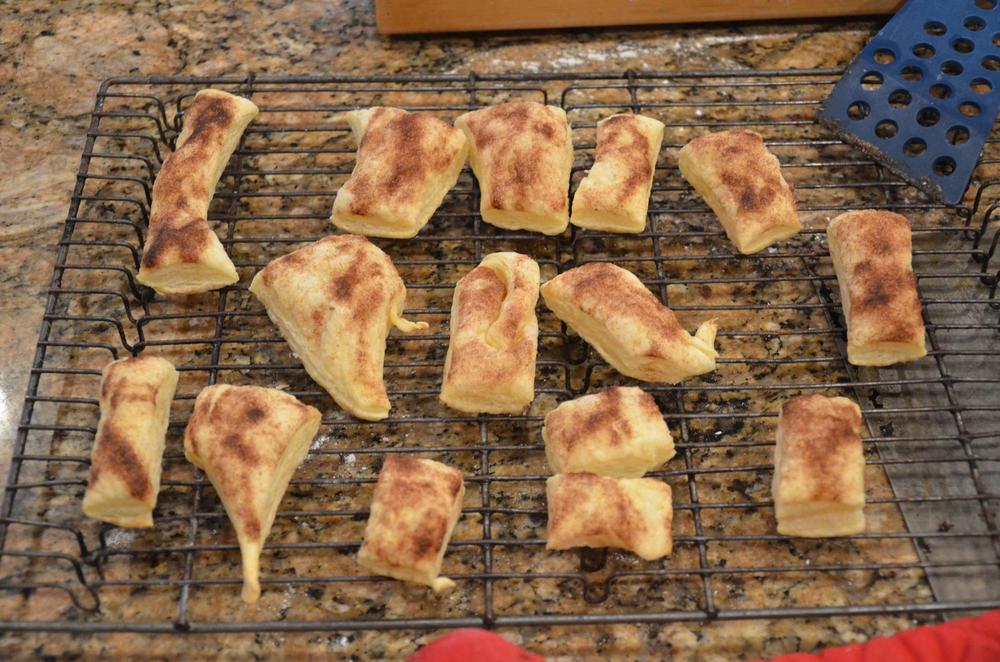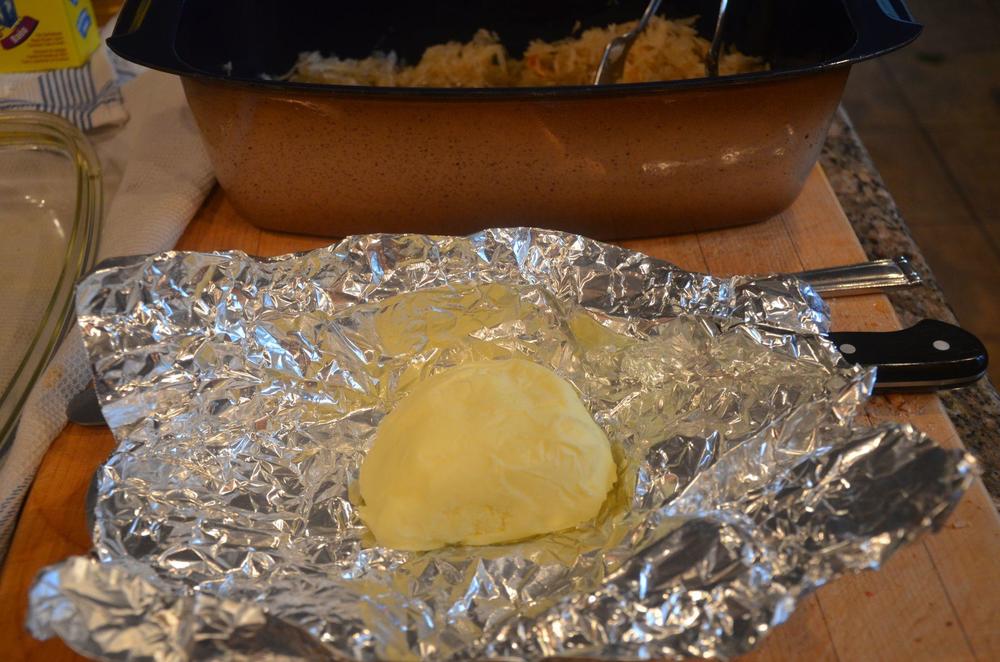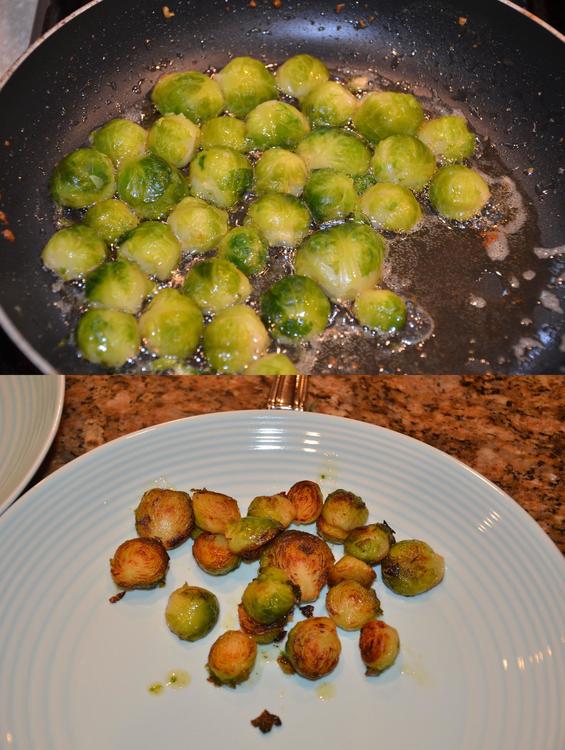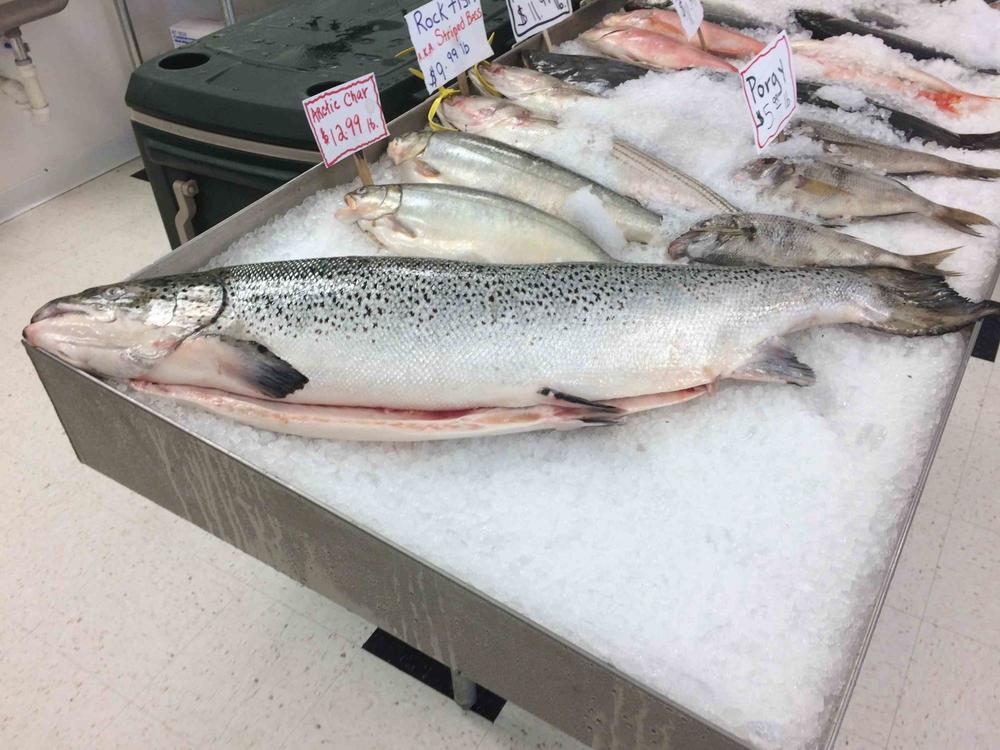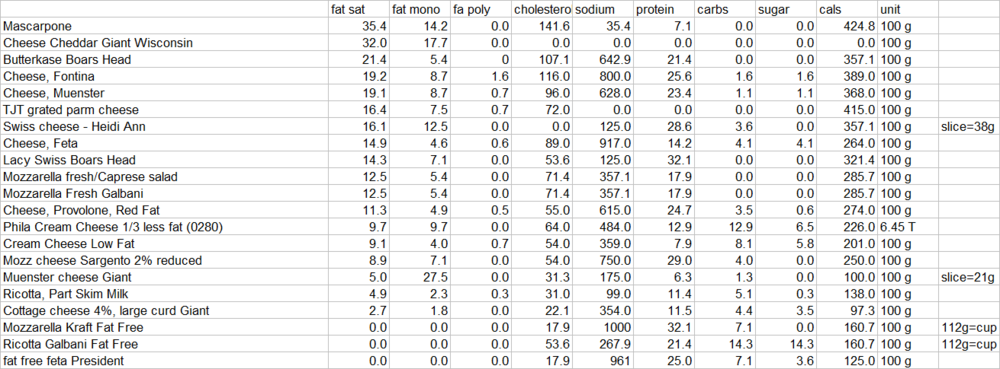-
Posts
1,652 -
Joined
-
Last visited
Content Type
Profiles
Forums
Store
Help Articles
Everything posted by AlaMoi
-
-
the best recipes are from the pre-WW2 era. did mine a little early this year - currently in the can, getting happy....
-
that's a lump of our home-churned. I keep it in foil because butter does pick up 'off flavors' from the fridge. with a stand mixer, home-churned is dead duck simple. 2 cups heavy whipping cream (yes, ultra pasteurized does work...) using the whisk, low speed to develop a foam high(er) speed to make whipped cream higher speed until it gets grainy then slow down a notch - eventually the water comes out of the butter fat in a flash you go from 'grainy-getting lumpy' to 'butter and buttermilk' in 4-5 seconds. left on high speed, it splashes and makes a big mess..... massage the butter mass into a ball, squeezing out the buttermilk. in some 20 minutes you've got really fresh butter. and, use it/a portion for the most sublime compound butter(s) on the planet.... and the buttermilk for pancakes / waffles, add bacon & real maple syrup. be sure to allow time to recover from the euphoria - it's that good a stuff....
-
I've had poor luck buying any of the imported plugras/hi-fats types in our area - the taste is off even tho it's "in date" I suspect it has not been stored properly somewhere along the supply chain. now and then I see domestic plugra brands but they are typically going 'out of date' shortly. apparently the stuff simple does not sell well here - right next to "Amish butter roll" Lancaster county.... for holiday meals I crank up the Kitchenaid and make my own (fresh) butter - saving the buttermilk for follow-on pancakes/waffles. we find a noticeable difference with fresh home churned vs. store bought.
-
-
steelhead is genetically a rainbow trout - which goes to sea . . . but is not a salmon. its wild / sea diet gives it (a deeper red than) salmon coloration and it is a most tasty dish. due to fishing pressure, last I heard only Canadian native peoples may harvest steelhead from the wild - the rest of it is farmed. as to run of the mill farmed salmon - it's pretty bad. our fish monger usually has Scottish farm salmon - big ones - fresh, never frozen, and it is seriously superior to supermarket salmon. edit: the pix reminded me - arctic char is also a super option in that "taste family"
-
I've been very impressed by "Carbon-off" https://www.amazon.com/gp/product/B009EC3T3U used it on the 'remains' of pot boil-over hard baked on crud. spray on, wait, crud literally washes off with water spray. it's a variety of super oven cleaner (same smell...) so I use it outside.
-
for reasons unrelated . . . we used to drive past here regularly (On Rt 29, south of Culpepper) https://www.princemichel.com/ in the category of reasonable pricing: they do a chardonnay that is finished in stainless - avoids the oak tones - remarkable difference to same wine oak aged. some of the merlots are a pleasant glass. (I'm not fond of a heavy tannin) full tastings available - complimentary if you buy $x dollars.
-
methinks 1/2 inch is a bit too thick for 'optimum' as you observed, cooked too long the slices get too soft and begin to disintegrate/fall apart. the trick is a thickness that allows them to cook to soft but not burn the coating/breading - which obviously also implies a suitable temp. I go by ear - with enough oil (depth) to keep the pan around the slices coated, a "medium sizzle" - just listen. if the sizzle sound get too frantic, they'll burn.
-
sometimes the "high end" fruits in our market are on a plastic-tray-on-a-box - like: https://www.bing.com/images/search?q=molded+pulp+fruit+trays one would have to beg them from the store - they are sold in package qtys of a billion.... beefsteaks get get quite large - you may have to home cobble something up like plastic flower pots in a corrugated box....
-
the "organic" thing is a real can of worms. I garden organically, using the guidelines in the Encyclopedia of Organic Gardening - Rodale was a pioneer in the field. when the Feds decided the meaning of "organic" needed definition, this is the result: https://www.ecfr.gov/cgi-bin/text-idx?c=ecfr&SID=9874504b6f1025eb0e6b67cadf9d3b40&rgn=div6&view=text&node=7:3.1.1.9.32.7&idno=7 scroll down to: The National List of Allowed and Prohibited Substances for the "complete" regulations, start here https://www.ams.usda.gov/rules-regulations/organic/national-list the situation has a lot of unresolved areas - one glaring example: fish labeled/sold as "organic" the US hasn't defined organic fish, other counties have - Canada for example
-
I snatched up one of the 27 extra thick ones - same marks - I presume it's a lubricant that gets baked on from the heat generated by the stamping. ran mine thru the oven self-clean cycle. turned the patches to white dust.
-
there are many delicious "combos" for fried green tomatoes (FTG) . . . (we've just cleaned out the garden) crab topping, shrimp, remoulades, avocado, etc etc but not much about seasoning the breading itself to pep up "plain" FGT (for clarity, this is the flour dredge+egg wash/buttermilk/cream+breading type breading) they all do salt & pepper various "std" suggestions - corn meal, panko, 'seasoned bread crumbs,' etc - which affect primarily the texture but can add a lot of flavor ... more adventuresome ... saltine / oyster cracker / Ritz crumbs.... not too many ideas on making the breading itself more zippy. discovered so far: cayenne onion garlic cumin - for the Tex-Mex crowd dry basil and "cajun seasoning" which covers a lot of undefined ground.... other ideas solicited! (not so much the toppings and sauces tho)
-
I'd say their copy is seriously out of sync. fwiw, one horsepower converts to 745 watts in real life. the advertising departments use "peak power" in their fake lives. if you read around, you will find people who have overloaded and burned up their mixers. if you're going to do heavy dough mixing, get the 500 watt model.
-
if you are going to do heavy work like bread dough kneading, get the 500 watt model. if you're restricting it to light duty - cake mixes and souffle - the 350 watt model will do.
-
this: https://www.rockler.com/eagle-ea-2000-1-gallon-silent-series-air-compressor have one - whisper quiet.
-
endorse by A-Lister celebs . . . . sends me running for the hills.
-

Disruptive technology may change the whisk(e)y industry - Economist mag
AlaMoi replied to a topic in Spirits & Cocktails
per the TV shows . . . . the done-gone legal moonshiners demonstrated an extremely accelerated process to turn moonshine liquor into 'fine aged whiskey' so, the jury is out. but anyone producing an inexpensive bottle of booze that is +/- not indistinguishably from the real deal, to the average tongue, will have a winner. -
there's a whole lotta' ifs-ands-buts to this topic. a family member had a "farm store" in the middle of (nothing but green in every direction) he finally had to call it quits and fold the place because the 'big box / discount retailers' were selling the same products for less than his wholesale/dealer price. so - "the middle of nowhere" definition is a bit fluid.
-
UK NHS has salt/sodium intake guidelines. something like 5,000 mg / day salt. US / FDA has not published guidelines - but health oriented organization (like Heart Association) talk numbers like less than 1,000 mg essentially, there are no good data / science based recommendations because apparently the human condition varies too much.
-
fwiw, if you want to dig deep(er) this has piles of detail, pictures, "approved" names + alternate names + NAMP & IMPS https://www.thelivestockinstitute.org/uploads/4/9/9/2/49923305/beef_urmis_guide.pdf I have a list of "fancy marketing names" but the source is now behind a 'wall' (source: www.meattrack.com/URMISfancifulNames.php) the UN Guide to stand beef names in various languages https://www.unece.org/fileadmin/DAM/trade/agr/standard/meat/e/Bovine_326Rev2E_2016.pdf (pg 23 has the bavette) this doc present the Latin American names https://www.usmef.org/export-resources/intl-innovative-cuts/international-beef-cuts-nomenclature-guide/
- 1 reply
-
- 1
-

-
sigh. been there doing that . . . there are a couple decent tasting low/no fat cheese - but anything involving 'melting' is a challenge. here's my list: it's a bit ad hoc so there's gaps. cholesterol & sodium is mg; all else g
-
look at "citrus peelers" - any number of cute plastic doohickies with hooks / curved blades / etc. one issue is whether a cut in the skin is not wanted. if you're going to peel it comma anyway, the point of a sharp knife will cut the plastic longwise pretty quick. I usually get it started, then 'invent and peel the plastic back on itself' - mostly because we typically only use 1/2 at a go.... that way the other half stays 'wrapped'
-
and WHO - when publishing their "may cause" findings - ignored data/reports they commissioned that disputed the claims, because it had not been published for at least six months. one is free to question the motives of their timing and the agendas of the people leading the charge. it is not uncommon in USA for juries to award spectacular trillions in awards which evaporate on appeals when companies force the issue of real facts and real data, not just what the plaintiff presents. another 50-100 years we will probably find out what is true and what is imagined. altho I'm not big pesticide fan, given the amounts of RoundUp used commercially and by homeowners, if it caused cancer we'd be seeing tens of thousands of cases.
-
hopefully you'll keep us posted how this all works out. after many years of 'just chef knifing it' I got a 7" Santoku - which very rapidly become my fav for vegetable prep. the Santoku has the 'flat' length of a 10" chef's (+/-) but is a lot more dexterous. not sure how I would do with the 'totally flat' edge of the Nakiri style vs. the Santoku, which has a very shallow 'belly' I read on the Wuesthof site the Nakiri is delivered with a 10 degree edge - that should be ueber sharp. using an EdgePro I brought my Santuko down to 18 degrees - and it performs seriously 'sharper' than a chef's at 21 degrees.


